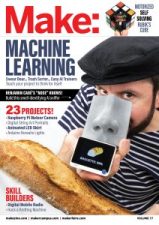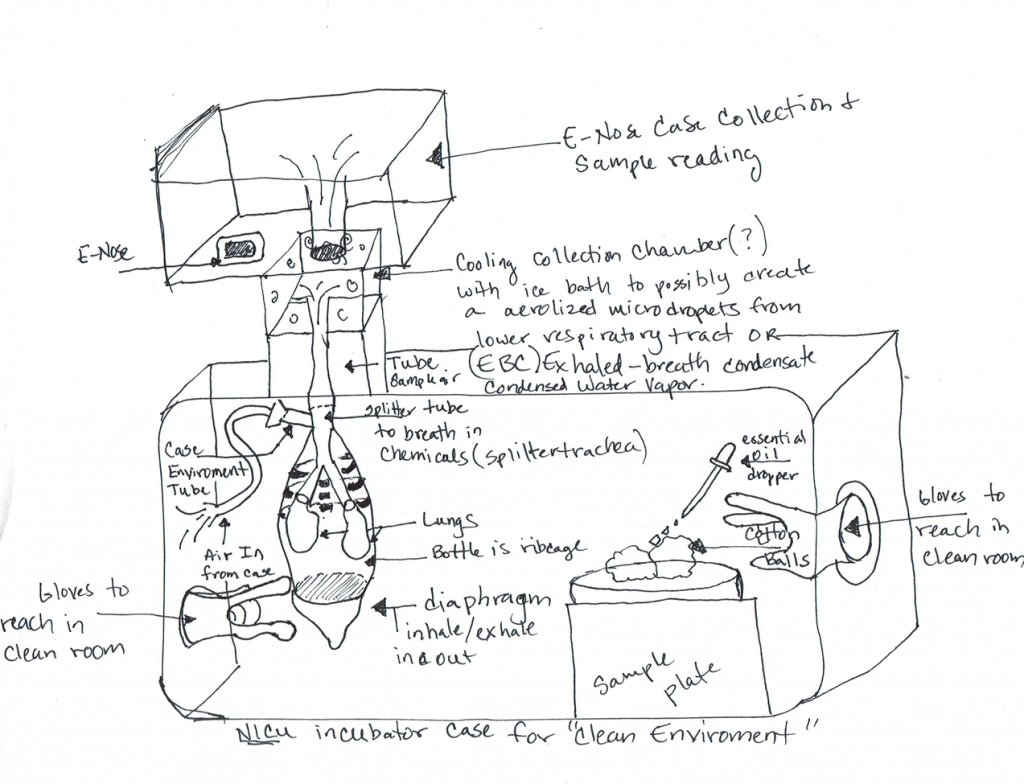A few weeks ago, Caleb, a 13-year-old kid from Los Angeles, California, reached out to me with some questions regarding my artificial nose project that was featured in MAKE: Magazine last year.
I quickly learned that as part of his 8th grade science project, he had spent several months researching the topic of fungal pneumonia. He focused more specifically on how to detect it more easily since most methods employed today are very costly, and often quite invasive.
His research led him to several studies that indicate how changes in volatile organic compound concentrations in our breath can be correlated to some “metabolic or (patho-)physiological processes in [our] whole body”.
I had a chance to read Caleb’s paper and it is nothing short of mind blowing. Thanks to his thorough methodology and outstanding ingenuity, he invented an AI-powered “breathalyzer” that can detect the markers of fungal pneumonia in someone’s breath.
Caleb has leveraged my project in ways I couldn’t have imagined when I started hacking around the idea of using AI and gas sensors to build an artificial nose. He even used the IoT aspect of it to enable remote diagnostic scenarios using Azure IoT Central!
I was recently lucky enough to be invited by my colleagues Ayşegül and Beatriz to be on Microsoft’s AI Show, and this was a perfect excuse for Caleb to join us and tell us more about his journey. There are many memorable quotes from him in the 1½ hour he spent with us on the show, but my favorite has to be:
No door is ever closed. You can do anything! I am a thirteen-year-old kid, and I can do this—if I can do it, anyone can!
Caleb K., 8th grade student about his science project.
Obviously, I highly recommend you catch up on the recording!


5 replies on “How a 13-year-old used my artificial nose to diagnose pneumonia”
Why isn’t there an actual link to the kid’s paper?
Great point — I don’t think Caleb is ready to publish a “v1.0” just yet but when he is, I’ll make sure to link to the paper here!
Caleb is to be congratulated for his work, as is Ben for providing the basis for it.
Either/both should investigate the company Owlstone Medical of Cambridge, who are very invested in this sort of medical diagnosis. Please reach out to them and make contact. Owlstone helps organise the #BreathBiopsy Conference and the MD, Billy Boyle, is a genuinely nice guy.
[I have no affiliation except that I’ve met Billy]
Of all the things this obviously precociously intelligent kid said, you published the one that is glaringly false. Sorry, but exceedingly few other people could conceive this apparatus, no matter how hard they tried. I’m guessing you were trying to get other kids to give STEM a whirl but it’s a patronizing trope.
Hi Ben! My daughter suffers from severe peanut and tree-nut allergy.
I will like to build her a version of your artificial nose to be able to detect peanuts and tree-nuts in food. How sensible is the smell detector? Do you think the device has the potential to be able to detect trace amounts of specific food? There are other attempts to do this in other ways. I don’t pretend you to read the below or find commercial viability to the project, I just want to help my daughter live a safer life:
https://www.theverge.com/2019/4/1/18080666/nima-sensor-testing-fda-food-allergy-gluten-peanut-transparency-data